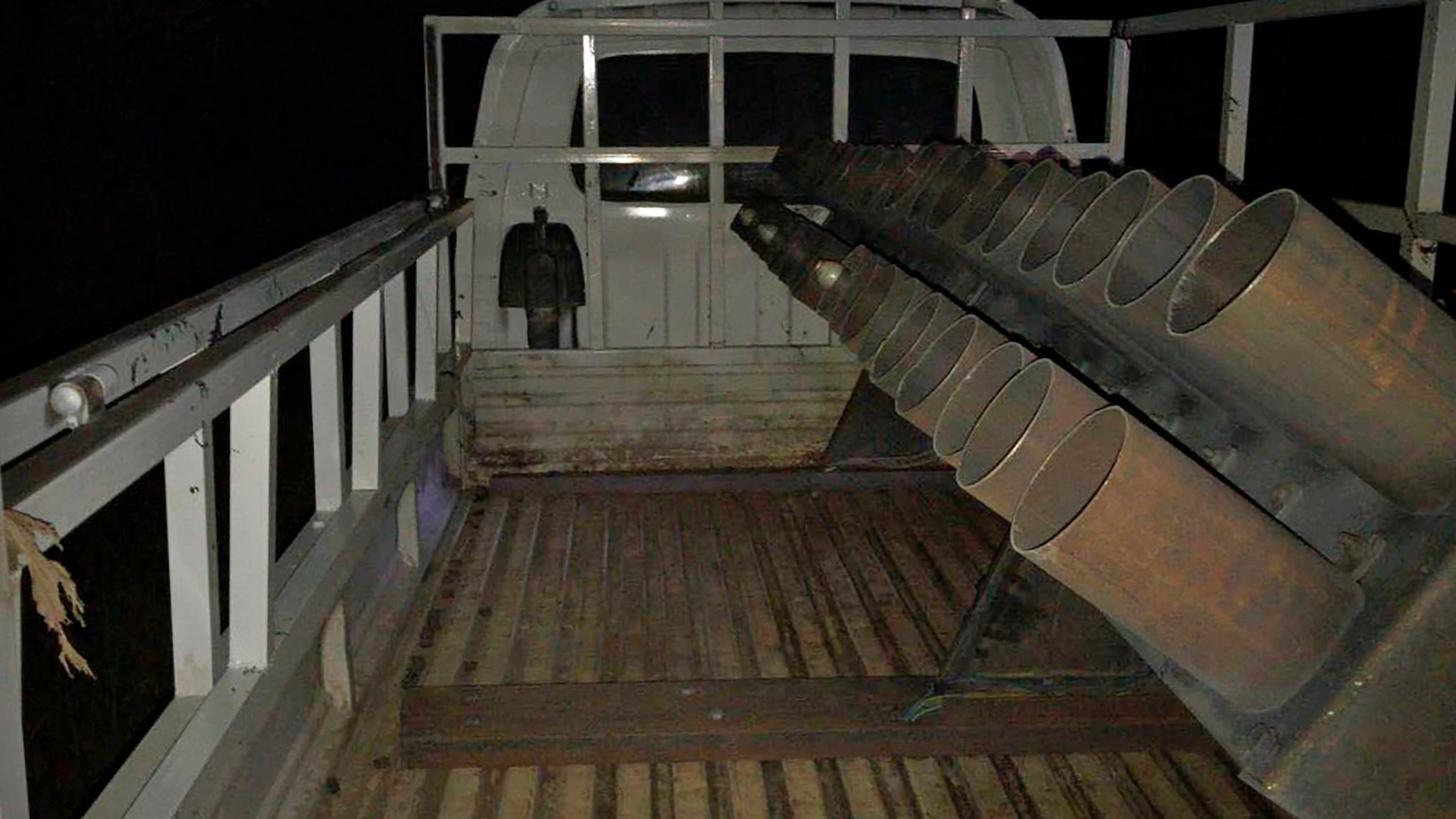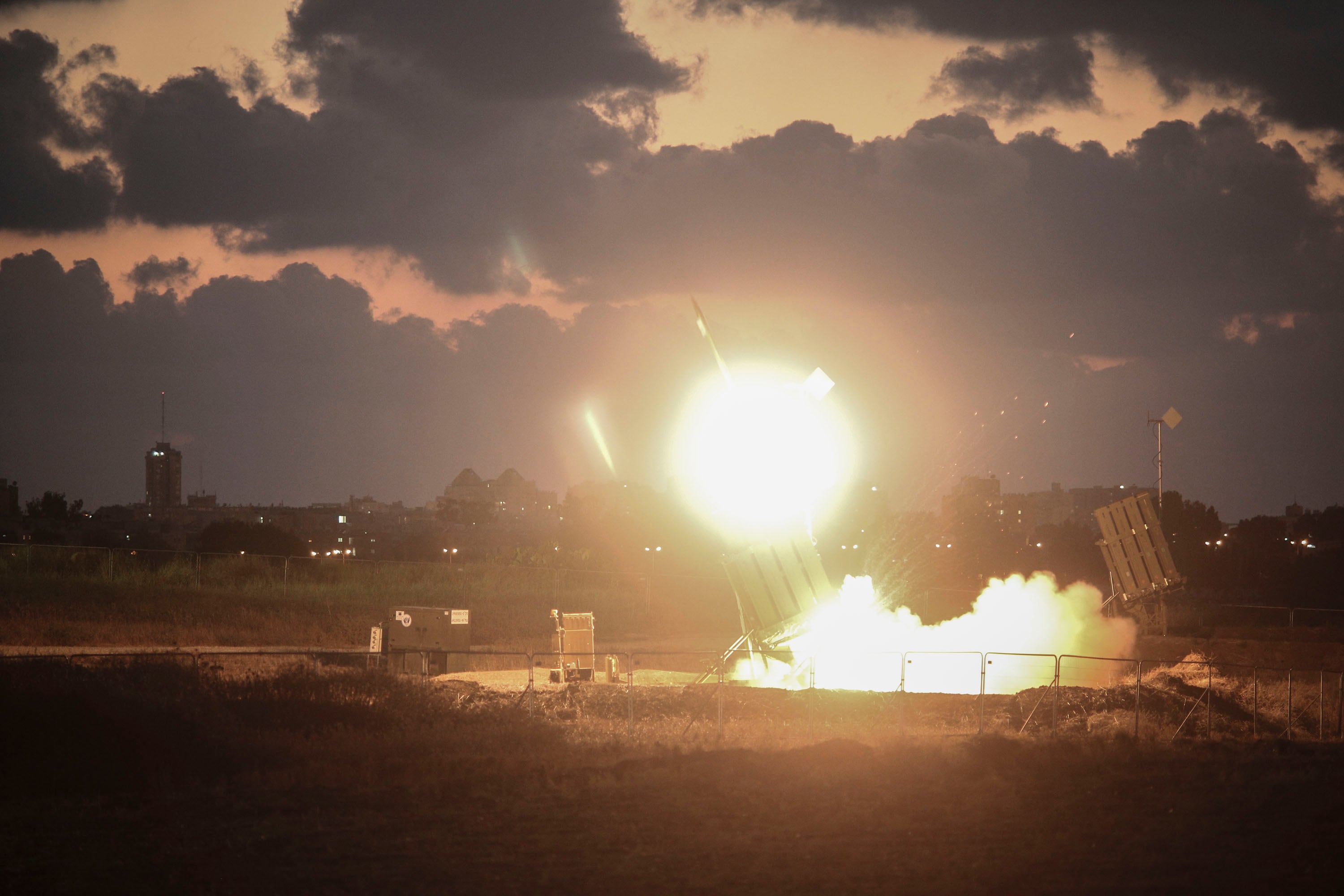The urgent need to protect troops against air and missile threats was highlighted once again this week after two Americans and one Briton were killed by a volley of Katyusha rockets at Camp Taji, Iraq.
Although a capability exists to curtail such attacks, the Army has concerns about using it, a stance that’s frustrating lawmakers.
The service already purchased two Iron Dome systems from Israel that have been able to intercept Katyusha rockets fired from the Gaza Strip, but those systems won’t be fielded until the end of the year. Even then, soldiers will need to be trained up on the equipment, Lt. Gen. Daniel Karbler, who leads Army Space and Missile Defense Command, said Thursday at the Pentagon.
“We know that Iron Dome has a combat-proven capability,” Karbler told Army Times when asked whether it could’ve intercepted the March 11 rocket attack on Camp Taji. “I’ve got to assume that it would have worked, given it was in the optimal state of readiness as well as positioned to defend that particular asset.”
Army leaders say there are problems with how Iron Dome will fit into their vision of a future array of integrated missile defenses. Unlike other equipment, Iron Dome can’t share targeting information with existing radars and launchers, military officials say.
It’s essentially a stand-alone asset. It won’t feed into the integrated architecture the Army is championing as the best way to combat missile threats from peer adversaries like China and Russia. But far more simple hazards, like Katyusha rockets and even aerial drones, are what harass troops in Iraq and Syria today.
“I don’t want to see the perfect be the enemy of the good,” said Rep. Doug Lamborn, R-Colo., during a congressional hearing Thursday morning. “I don’t want to see a perfect, hoped for, and expected capability, deter us from using something that is available and usable right now — and will save lives."
Israel’s development of the Iron Dome was partially funded by American tax dollars, Lamborn noted, as he and other House Armed Services Committee members pushed Pentagon experts on the lack of interceptors in Iraq.

The Army also used to have its own Counter-Rocket, Artillery, Mortar systems, or C-RAMs, in place to defend bases in Iraq. Those were drawn down along with the majority of U.S. troops years ago.
“[C-RAM] is a proven capability that we have that can be used in the interim to ... backstop until we bring the future indirect fire protection capability, whether that’s Iron Dome in the future, or another capability,” Karbler said.
U.S. Central Command is now moving air and missile defense capabilities into Iraq, Karbler added, but he couldn’t elaborate on which systems those will be.
The Army plans to do a “shoot-off” in the spring of 2021 to determine what other system can do the Iron Dome-style job within an integrated missile defense network.
Lawmakers appear exasperated with the timeline, though, as rocket attacks have plagued the U.S. presence in Iraq for months, killing two U.S. troops and injuring a dozen others this week. An American contractor was also killed in a rocket attack earlier this year.
“Iron Dome is specifically designed for that [Katyusha rocket], and it doesn’t have to be integrated into your grand plan,” said Rep. John Garamendi, D-Cali. “[It] could have been available, but you have a grand plan of some great integration system."

Congress originally mandated the Army deploy two Iron Dome batteries by fiscal 2020 in the service’s budget for the previous year. When the Army ultimately does field Iron Dome, officials will assess whether it can be used in theater, Karbler said.
“The Israelis have shown it is a very capable system," Karbler added. "It is also a system that is used within Israel, so again we have to be able to look at how deployable is it, how well can we get it into theater and then operate with the soldiers given that it might not be as maneuverable as we might want it to be.”
Missile and air defense often channels visions of expensive threats. But U.S. troops in Syria have recently been attacked by small drones dropping mortars and grenades as they guarded oil fields.
Gen. Kenneth McKenzie, the top officer at CENTCOM, said his staff was still working to determine the source of those small drones, but he believed ISIS was behind the attacks. And the use of those tactics hasn’t just been focused on U.S. positions.
“The Russians had some significant casualties in this regard, as have other nations that are operating there," McKenzie said earlier this week. "So yes, it is a problem. We look at it very hard. It’s one of my highest priorities.”
Low-flying cruise missiles have also exposed a vulnerability in U.S.-produced systems.
During a Sept. 14 attack on Saudi oil facilities by Yemen-based militants, a set of inexpensive drones and low-flying cruise missiles hit their targets after circumventing early-warning radars and Patriot missile batteries in the area.
The Pentagon explained the failure of the American equipment by stating that the Saudis relied too much on one layer of what should be a multi-layered air and missile defense network.
Kyle Rempfer was an editor and reporter who has covered combat operations, criminal cases, foreign military assistance and training accidents. Before entering journalism, Kyle served in U.S. Air Force Special Tactics and deployed in 2014 to Paktika Province, Afghanistan, and Baghdad, Iraq.





